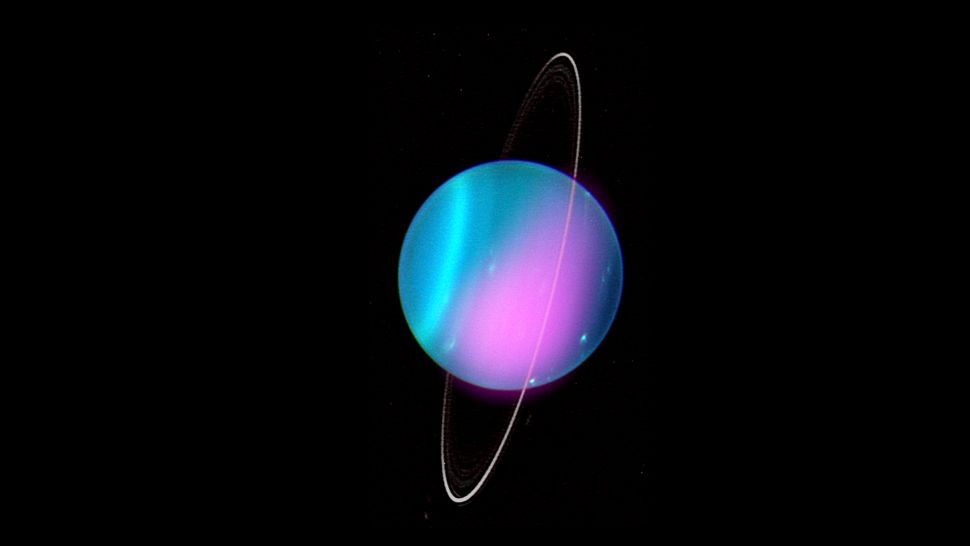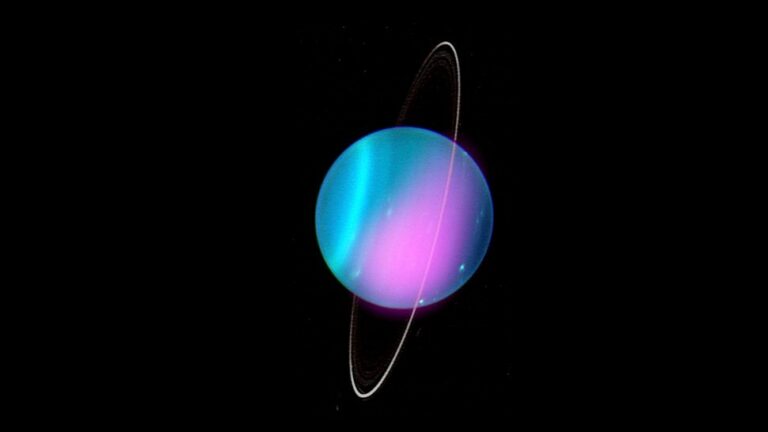In retrieved Voyager 2 data, a mysterious dust ring surrounding Uranus was revealed.
Researchers have discovered a brand-new puzzle regarding Uranus’ rings that was hidden deep inside the historic Voyager 2 mission data from NASA.
When Voyager 2 passed by Uranus in January 1986, it became the first and only spacecraft to have done so. During its passage, it found ten moons and two rings. Astronomers have been irritated by one of those rings, known as the zeta ring, ever since they were unable to see it for over two decades. But this year, amateur image processor Ian Regan surprised scientists by providing a fresh photograph of the Uranus ring system, which included the elusive zeta ring.

Matthew Hedman, a planetary scientist at the University of Idaho, stated at a presentation on October 5 at the annual conference of the American Astronomical Society’s Division of Planetary Sciences, “For a long time we thought we only had two photographs of this ring from Voyager 2.” This demonstrates that there is still a ton of information packed in the Voyager data that merits further investigation.
The reddish dusty ring nearest to Uranus wasn’t apparent in any one photograph, so scientists missed the discovery at first. Regan had to combine a number of photos to make the structure visible. He assembled hundreds of pictures to create this depiction of the Uranian system, according to Hedman. “We didn’t realize it existed in the Voyager data for decades, but this is the most complete image of the zeta ring that exists.”
Hedman and his colleagues were able to compute the ring’s distance from Uranus, which is around 23,000 miles (37,000 kilometers) above the planet, as well as its brightness using the new image in conjunction with the previous two Voyager images.
However, both of those ideals raise questions. The first observations of the zeta ring since Voyager 2 in 2007 were made at the Keck Observatory in Hawaii. These observations placed the ring at a higher altitude than the Voyager 2 observations, at 25,000 miles (40,000 km) above the planet.
The difficulty, according to Hedman, is that the Keck observations don’t match the position of the ring as shown in Voyager photos. “Over the last 20 years, this ring has undergone a modification. However, we’re still not exactly certain what that was.”
Additionally, during the two decades that it was unobserved, the zeta ring didn’t simply veer further and further away from the planet; it also registered a greater signal in the Keck observations than it had in Voyager 2’s perspective.
It became noticeably brighter, which indicates that dust entered the system somewhere over those 20 years, according to Hedman. “What happened, then? We don’t know.”
Hedman speculated that Uranus may have been struck by a space rock that broke up into debris and fell into the zeta ring, or that possibly the cyclical nature of the seasons might be to blame, but these are only theories. Whatever took place had to have been unexpected and spectacular enough to have an impact on the rings.
Scientists won’t get data from that expedition for several decades, but NASA will start preparing a significant mission to examine the Uranus system in the coming years. Hedman pointed out that a stunning image of comparable rings around Neptune was just revealed by the James Webb Space Telescope.
The telescope, he added, “looks to be particularly good at looking at dusty rings surrounding planets.” That may be good, then.
Source:SpaceCom
Do not forget to share your opinion with us to provide you with the best posts !




0 Comments